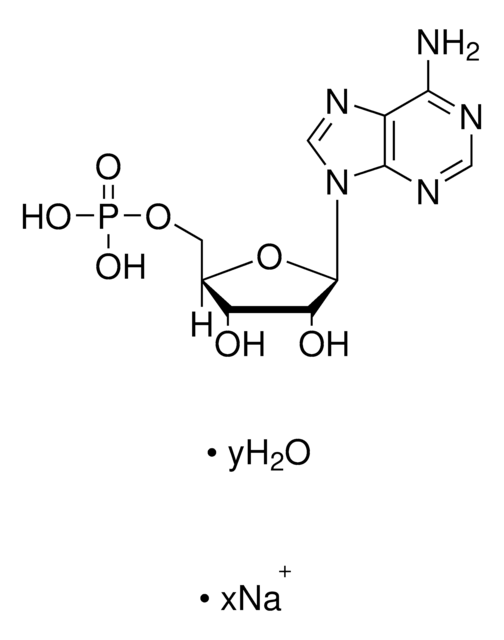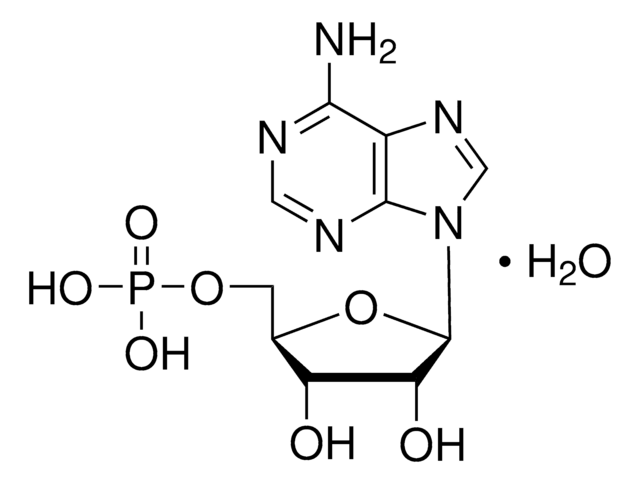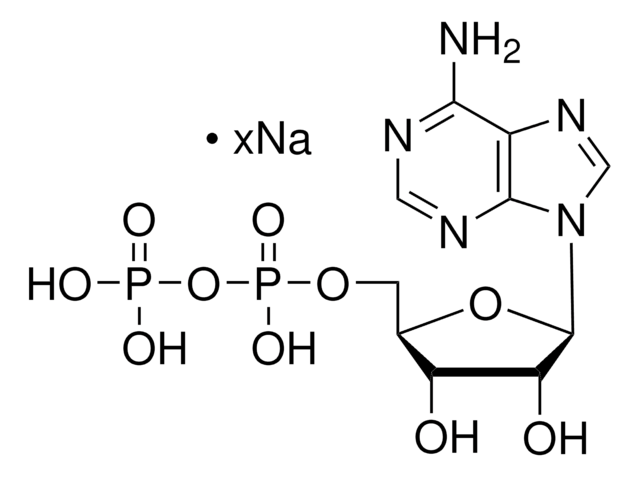A4418
Ammonium sulfate
for molecular biology, ≥99.0%
Synonym(s):
Mascagnite
About This Item
Recommended Products
grade
for molecular biology
Quality Level
Assay
≥99.0%
form
powder
technique(s)
affinity binding assay: suitable
protein purification: suitable
impurities
≤0.005% Insolubles
pH
5.0-6 (25 °C, 132 g/L)
mp
>280 °C (dec.) (lit.)
solubility
H2O: 0.667 g/mL
density
1.77 g/mL at 25 °C (lit.)
anion traces
chloride (Cl-): ≤5 ppm
cation traces
Cu: ≤5 ppm
Fe: ≤5 ppm
Zn: ≤5 ppm
heavy metals (as Pb): ≤2 ppm
absorption
≤0.025 at 280 at 1 M
≤0.03 at 260 at 1 M
suitability
suitable for flow cytometry
suitable for molecular biology
application(s)
metabolomics
microbiology
foreign activity
DNase, RNase, and protease, none detected
SMILES string
N.N.OS(O)(=O)=O
InChI
1S/2H3N.H2O4S/c;;1-5(2,3)4/h2*1H3;(H2,1,2,3,4)
InChI key
BFNBIHQBYMNNAN-UHFFFAOYSA-N
Looking for similar products? Visit Product Comparison Guide
Related Categories
General description
Application
- in the preparation of ′Blue Silver′ colloidal Coomassie stain for proteins.
- to precipitate the Shiga-like toxin from the culture supernatant.
- for precipitaion of viral particles from the culture supernatant.
Features and Benefits
- Heavy metals (as Pb): ≤2 ppm
- Free from DNase, RNase, and protease
Other Notes
comparable product
related product
Storage Class Code
11 - Combustible Solids
WGK
WGK 1
Flash Point(F)
Not applicable
Flash Point(C)
Not applicable
Personal Protective Equipment
Choose from one of the most recent versions:
Certificates of Analysis (COA)
Don't see the Right Version?
If you require a particular version, you can look up a specific certificate by the Lot or Batch number.
Already Own This Product?
Find documentation for the products that you have recently purchased in the Document Library.
Customers Also Viewed
Our team of scientists has experience in all areas of research including Life Science, Material Science, Chemical Synthesis, Chromatography, Analytical and many others.
Contact Technical Service




